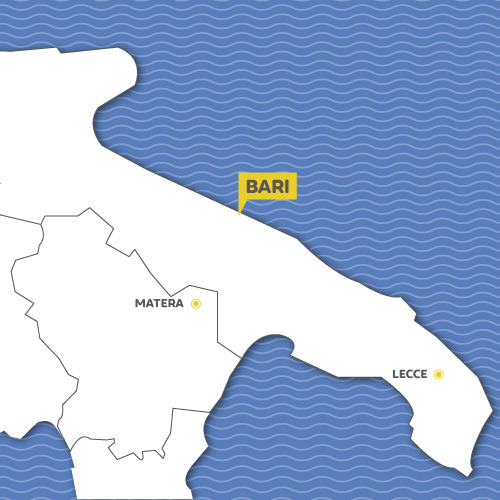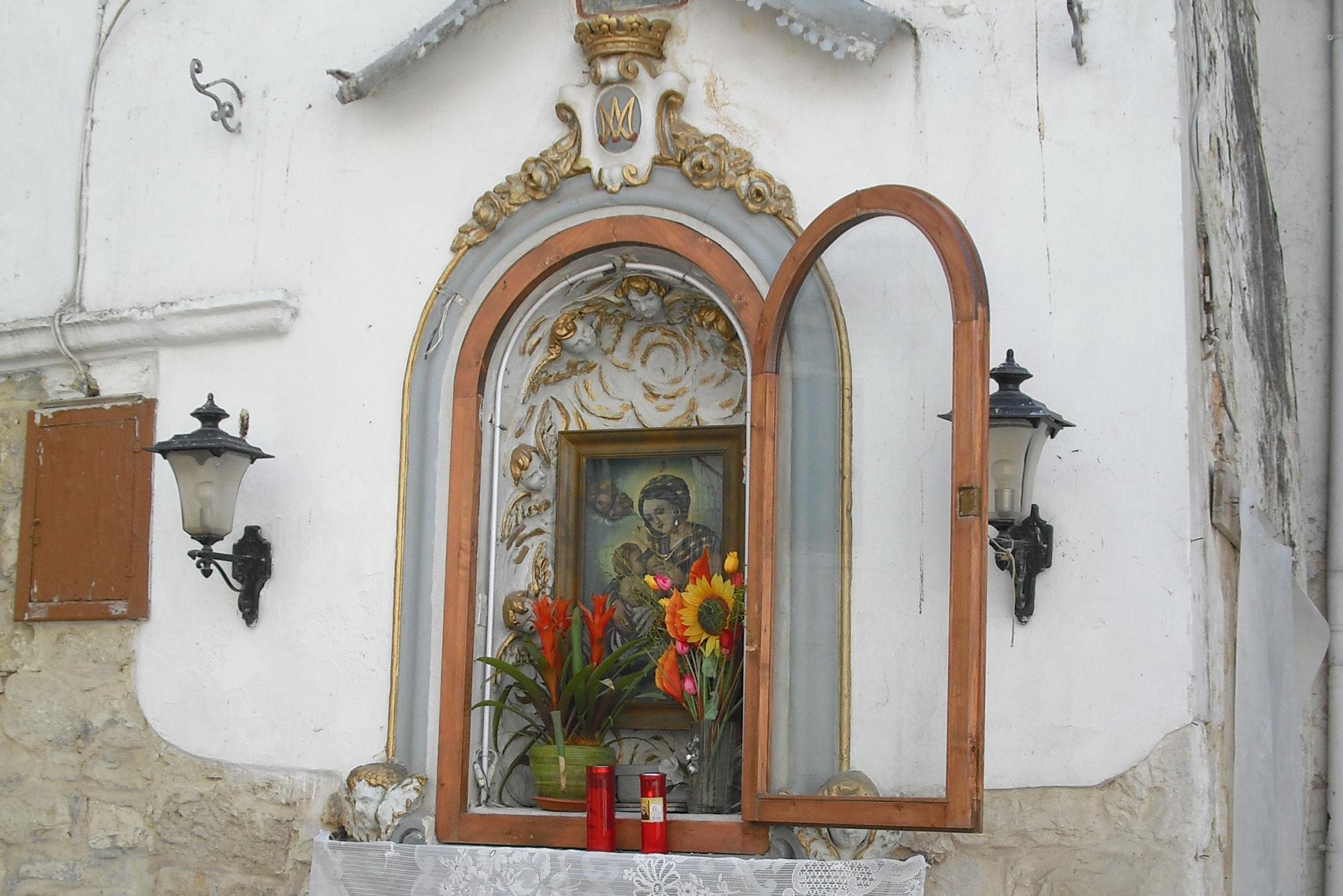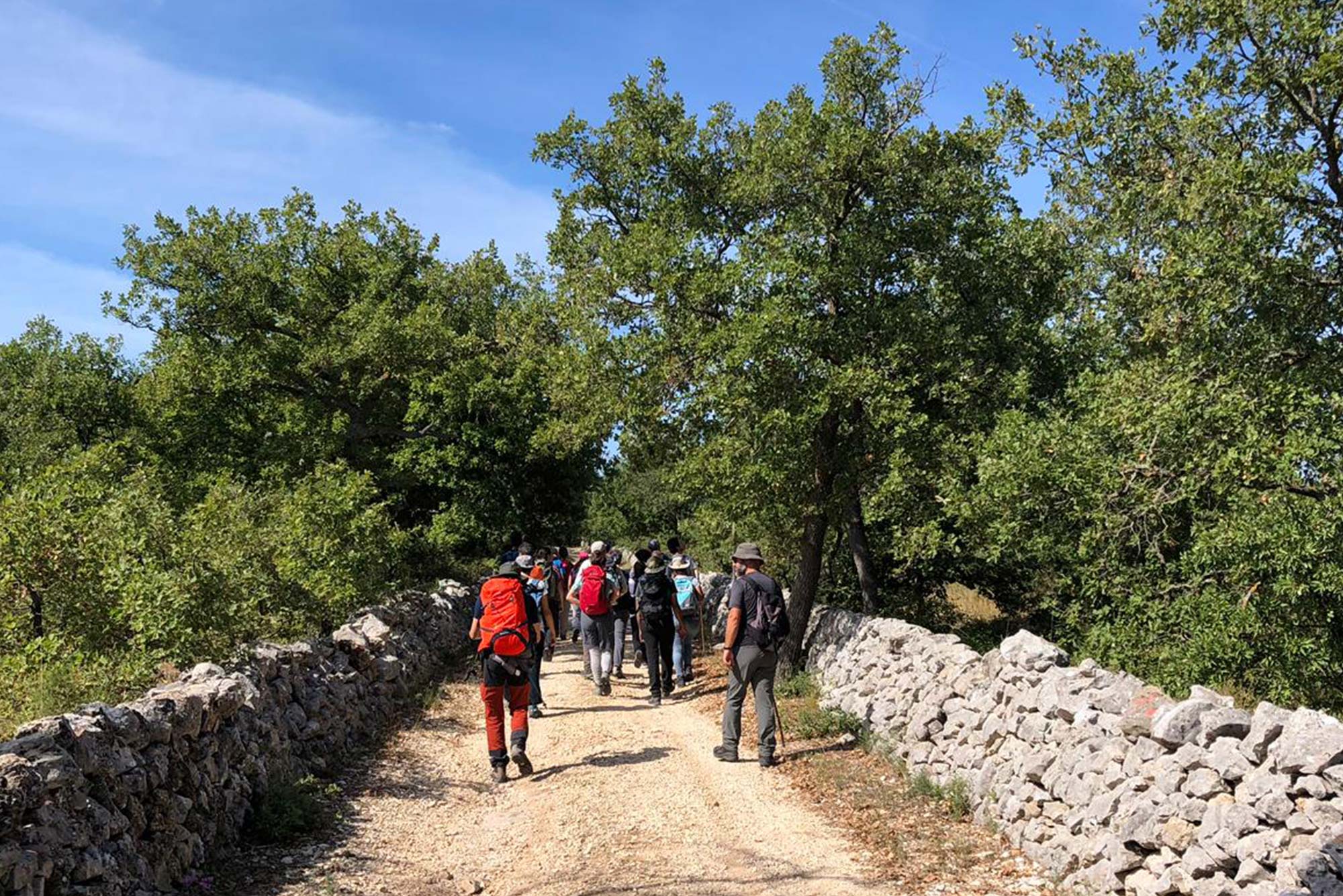Bari

Bari boasts Italy's longest seafront, studded with majestic palaces, while the sea breeze wafts through the historic centre, with its art, flavours, and colours.
A captivating place to discover, Bari is a city of two faces with its elegant Murat district and, stretching along the Adriatic Sea, the spellbinding area of Bari Vecchia (Old Bari). Acting as a gateway to the old city, the grand Castello Svevo (Swabian Castle) is crowned with fortified towers. Once used as defensive castle, it later became a Renaissance residence. The Arco del Pellegrino (Pilgrim’s Arch) leads through to the heart of the Cittadella Nicolaiana and its Basilica, a prized example of Puglia’s Romanesque architecture that's dedicated to San Nicola, Bari's patron saint. Nearby is the Romanesque Cathedral of San Sabino, with its baroque crypt. Bari’s 19th century Murat district boasts many elegant palaces, such as the Teatro Petruzzelli, Teatro Piccinni, and Palazzo Fizzarotti, while underground, you'll find hidden treasures: rupestrian churches and hypogea dug into the rocks, such as the Temple of San Giorgio, the hypogeum of Madia Diana, and the “Jewish” hypogeum.
Puglia's regional capital, Bari plays a fundamental role in connection with other Mediterranean countries, thanks to the strategic role played by its port, airport, and international trade fair Fiera del Levante. Don’t miss the festivities of San Nicola, the city’s patron saint, which are celebrated in December and again in May with the Historical Parade of the Caravella.
What to see:
Bari's Norman-Swabian Castle
Teatro Petruzzelli
Pontifical Basilica of San Nicola
Da assaggiare:
Barattiere
Focaccia barese
Terra di Bari DOP

Votive shrines in Puglia
Since ancient times, man has wanted to establish a link with the land that he considers “his” by interpreting unusual events as supernatural signs: the will of God consecrating the bond. And so they arose, crossroads and places in which there were miraculous events or events which were difficult to reconcile with a rational explanation. They began to be considered sacred and distinguished from the modest chapels in which statues were placed. The coming of Christianity saw an introduction of new objects of devotion being placed inside these shrines, like statues of saints, of Mary, mother of Jesus, and of Christ. In line with their origins, the name “edicole” (shrines) derives from the Latin word “aedicula’, which means a small temple, tabernacle, a small sanctuary and, most probably, the shrines already existed in ancient Egypt and Greece. They were repudiated by the first Christians and slowly came back into accepted practice during the Medieval Age.

The Misthery of the devil's Jazzo
Going on vacation in Puglia often means staying in fortified farmhouses adapted for tourism, called masserias. They are found throughout the region, each one with characteristics tied to the unique nature of the specific area in which it is located. They are certainly some of the most prevalent rural buildings in this part of Italy, but they are not the only ones. Entering the region called Murgia, and within the sub-region of Gargano, you can find, together with the masserias, little houses called jazzes.